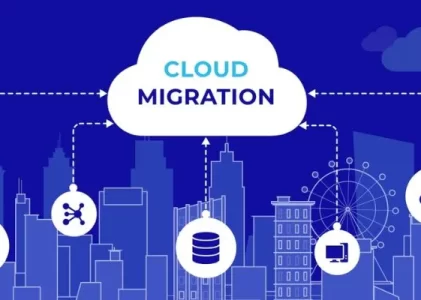Cloud computing has revolutionized how businesses operates, offering flexibility, scalability, and cost-efficiency. Organizations worldwide are increasingly migrating their data, applications, and processes to the cloud to stay competitive. However, the transition to cloud infrastructure is not without its hurdles. While the benefits are numerous, businesses often encounter challenges during migration that can slow down progress and lead to unforeseen complications. This blog will explore the common challenges companies face when migrating to the cloud and how to overcome them.
Challenges of Migrating to the Cloud
1. Lack of Proper Planning
One of the most significant challenges in cloud migration is inadequate planning. Without a well-defined migration strategy, businesses may face unexpected costs, downtime, or performance issues. Planning should involve:
- Assessing current infrastructure and identifying what needs to be migrated.
- Estimating costs and timelines.
- Choosing the right cloud providers that aligns with business requirements.
Solution: Develop a detailed migration plan and involve IT experts from the beginning. To gain a deeper understanding of cloud migrations strategies, consider enrolling in a Cloud Computing Course in Chennai.
2. Data Security and Compliance Issues
Security is often the primary concern for businesses moving their sensitive data to the cloud. Data breaches, unauthorized access, and compliance violations can lead to reputational damage and legal repercussions. Cloud environments are susceptible to security threats if not managed properly.
Common security concerns include:
- Data encryption.
- Access control management.
- Compliance with industry regulations such asGDPR or HIPAA.
Solution: Work closely with cloud providers to ensure robust security measures and conduct regular audits.
3. Downtime and Service Disruptions
Migrating application and services to the cloud can lead to temporary downtime or service interruptions, affecting business operations. Unexpected outages during migration can result in productivity loss and frustrated customers.
Solution: Schedule the migration during low-traffic hours and implement a phased approach to reduce the impact of downtime. Professionals can benefit from a Cloud Computing Online Course to learn best practices for minimizing service disruptions during migration.
4. Compatibility and Legacy Systems
Many organizations still rely on legacy system that may not be compatible with cloud platforms. Integrating outdated applications with cloud infrastructure can be time-consuming and costly. Additionally, businesses must understand How Does Google Ads work? to fully leverage cloud-powered digital marketing platforms that integrate with modern cloud systems.
Solution: Conduct compatibility assessments before migration and consider modernizing legacy applications gradually. Exploring cloud-friendly advertising tools like Google Ads can also help ensure a smooth transition into cloud-based operations.
5. Cost Overruns
While cloud computing is often seen as a cost-saving solution, migration can lead to unexpected expenses. Poor cost estimation, additional data storage needs, and ongoing cloud service fees can increase overall costs.
Solution: Monitor cloud usage regularly and choose scalable pricing models. Use cost management tools provided by cloud providers. Understanding cloud cost optimization can be enhanced by joining a Google Analytics Course in Chennai to master the art of tracking and analyzing expenditures.
6. Lack of Skilled Workforce
Cloud migration requires a skilled workforces with expertise in cloud technologies. Many organizations struggle to find qualified professionals capable of managing cloud operations. Employees often lack the practical knowledge to handle cloud systems efficiently.
Additionally, adopting Best Excel Use Cases and Templates for Project Management can assist teams in tracking and managing cloud migration processes more effectively.
Solution: Invest in employee training programs or hire cloud experts. Developing cloud computing expertise can be achieved through structured learning paths and certifications.
7. Data Loss Risks
During the transfer of data to the cloud, there is a potential risk of data loss due to human errors, connectivity issues, or software failures. Losing critical business data can have long-term consequences.
Solution: Backup all data before migration and implement data recovery plans. Professionals looking to improve data management practices can benefit from a Google Analytics Online Course to strengthen their data analysis and protection skills.
8. Vendor Lock-in
Choosing a specific cloud provider may lead to vendor lock-in, limiting the flexibility to switch offers in the future. Businesses may face difficulties migrating data or applications from one cloud platform to another.
Solution: Opt for multi-cloud strategies and use standardized platforms to reduce dependency on a single vendor.
Migrating to the cloud offer numerous benefits, but it comes with its own set of challenges. From data security concerns to compatibility issues and cost management, businesses must address these obstacles to ensure a smooth transition. With careful planning, employee training, and the right cloud strategy, organizations can successfully migrate to the cloud while minimizing risks. To gain hands-on expertise and industry-oriented training, consider joining in a Software Training Institute in Chennai and stay prepared for the cloud-first future.
Comments
0 comments

